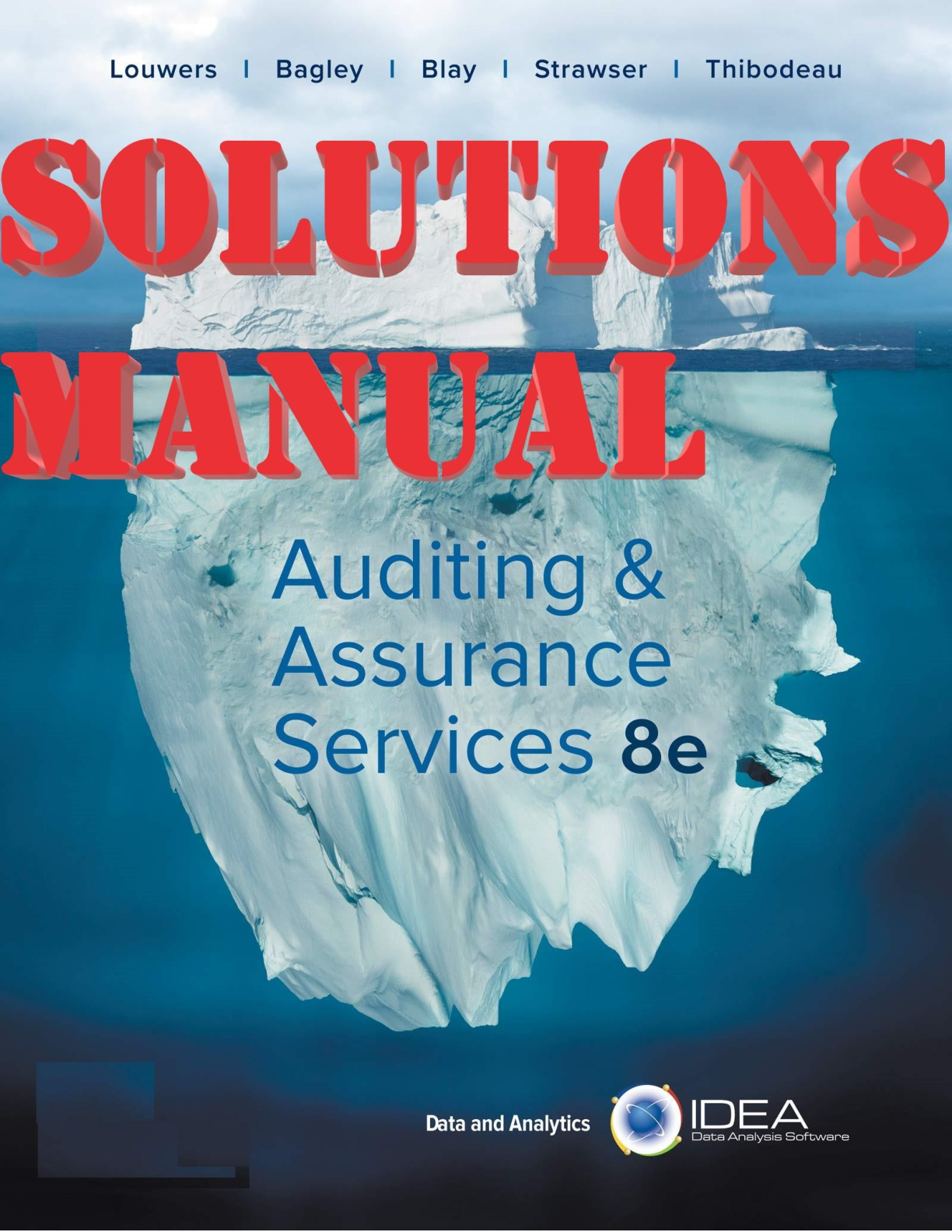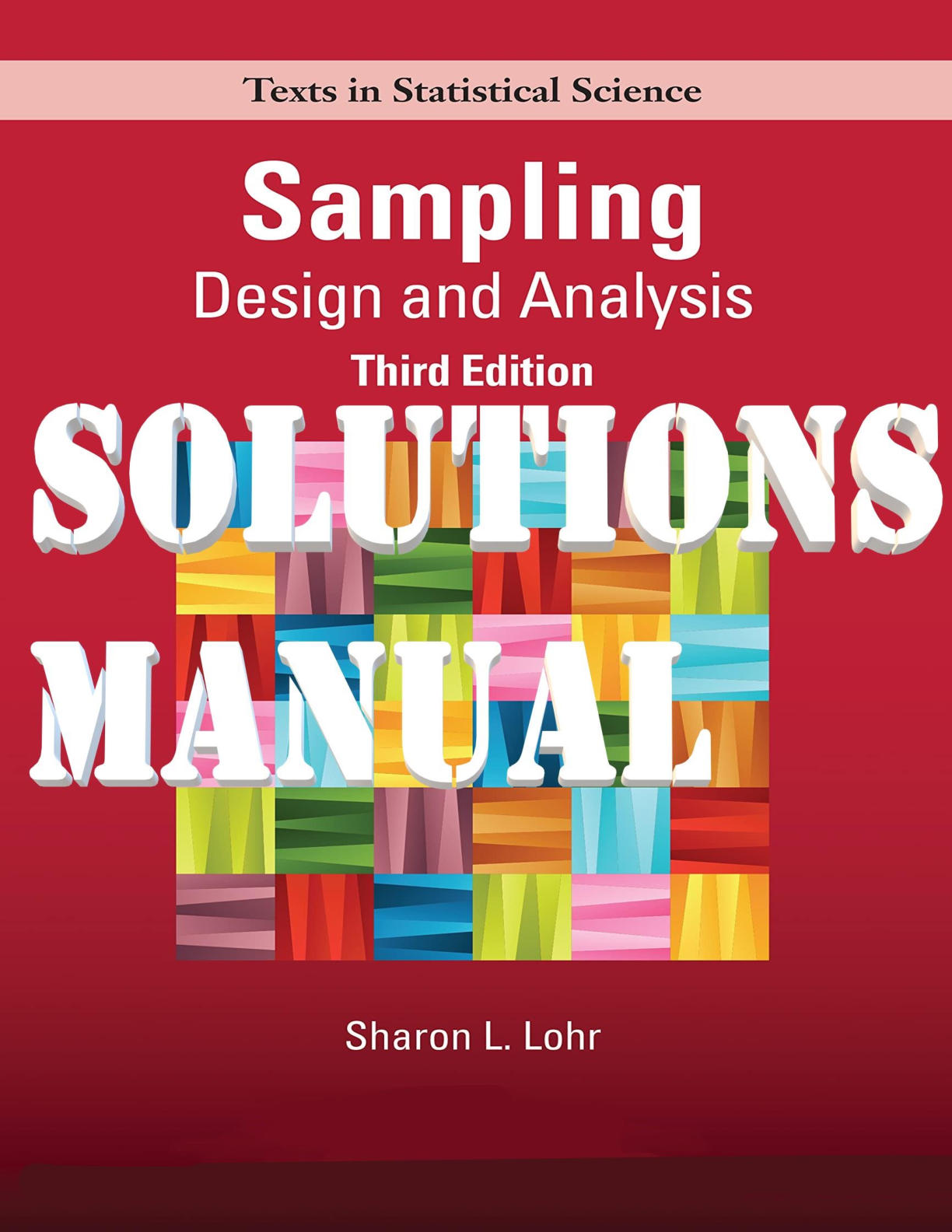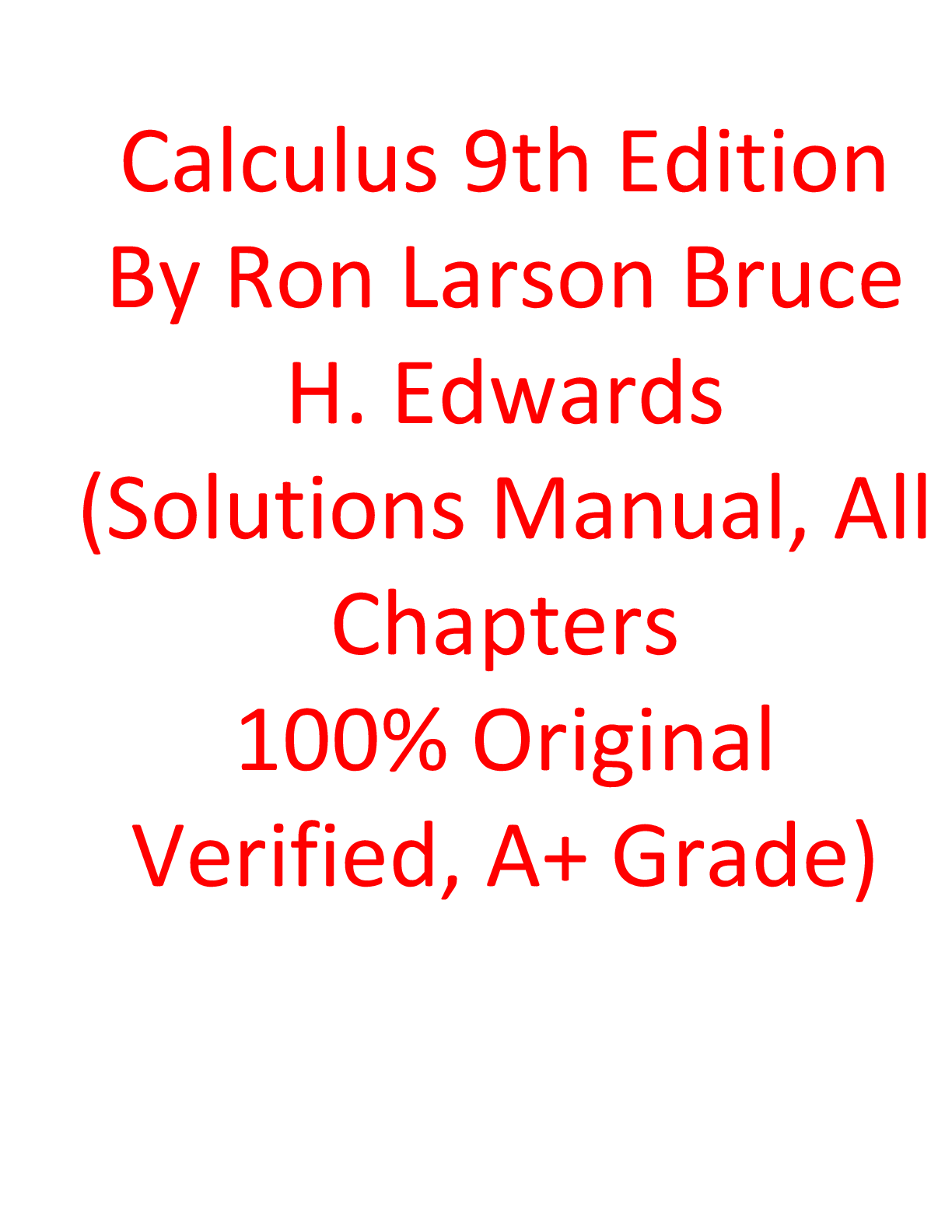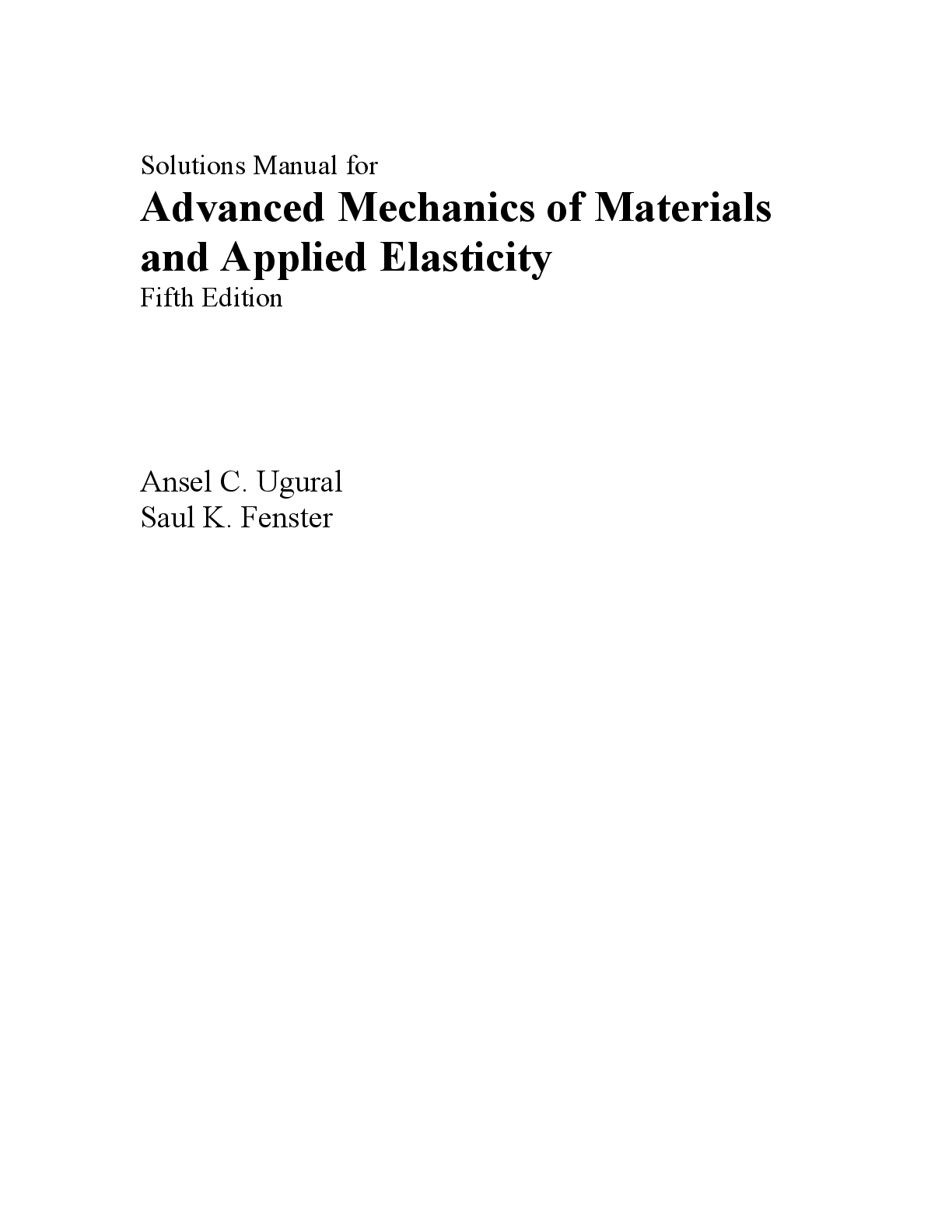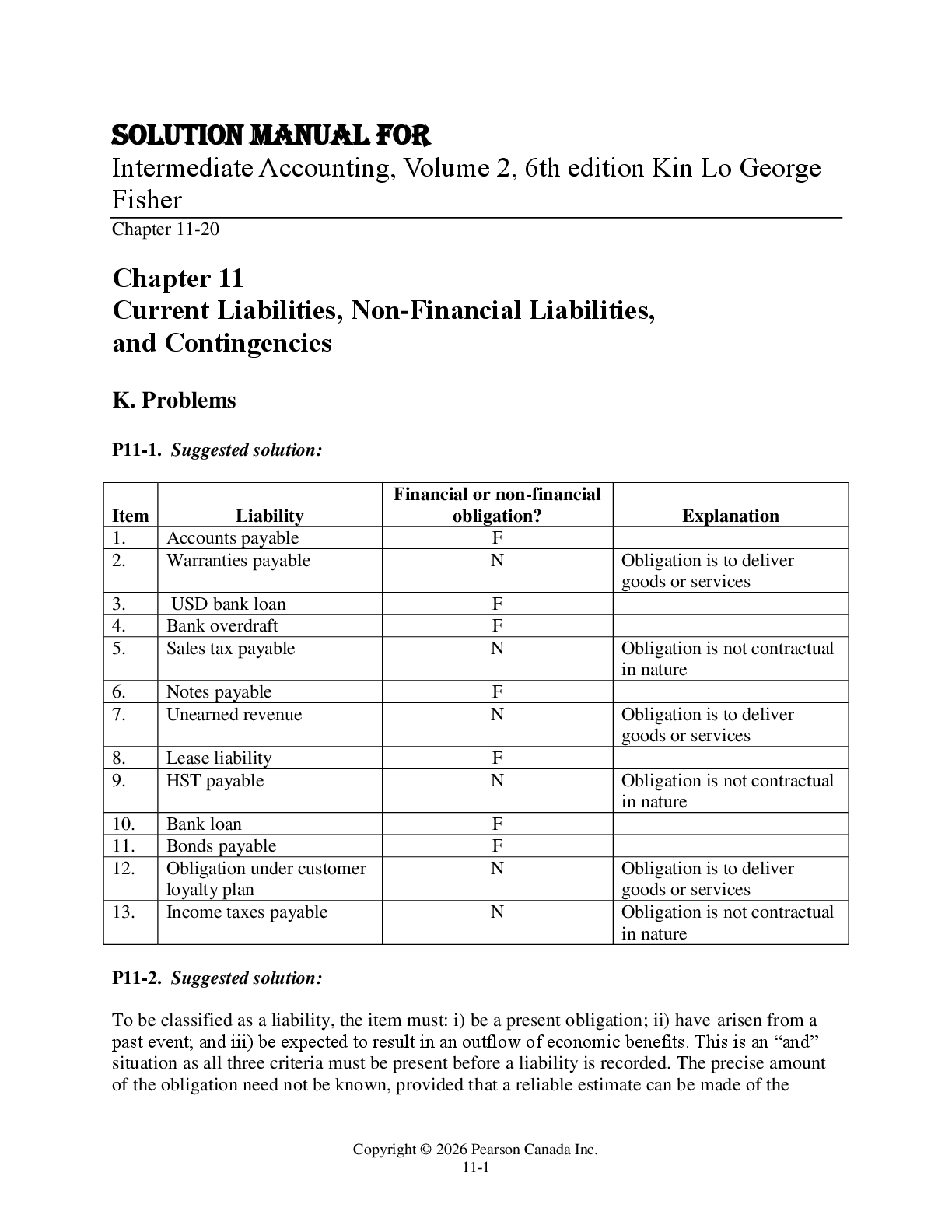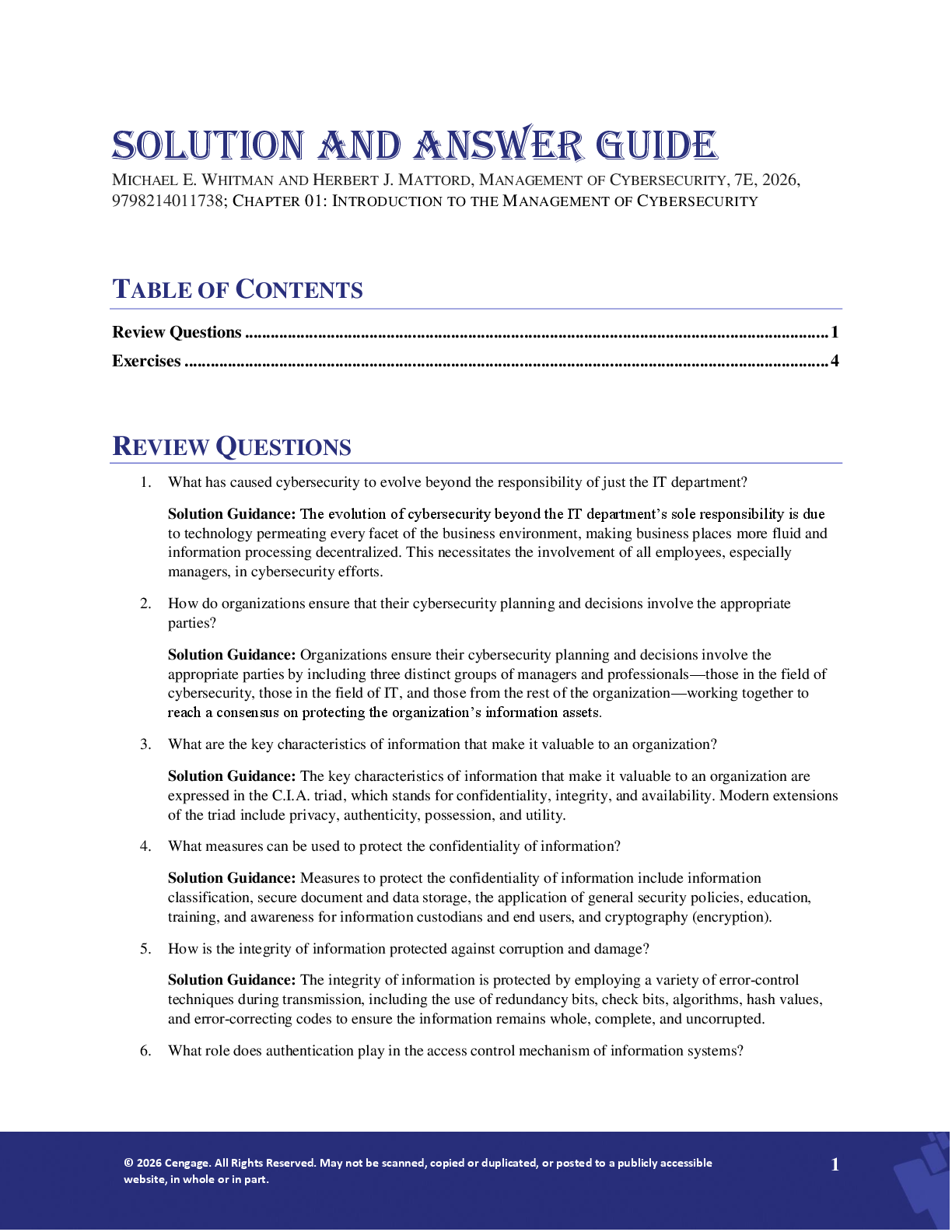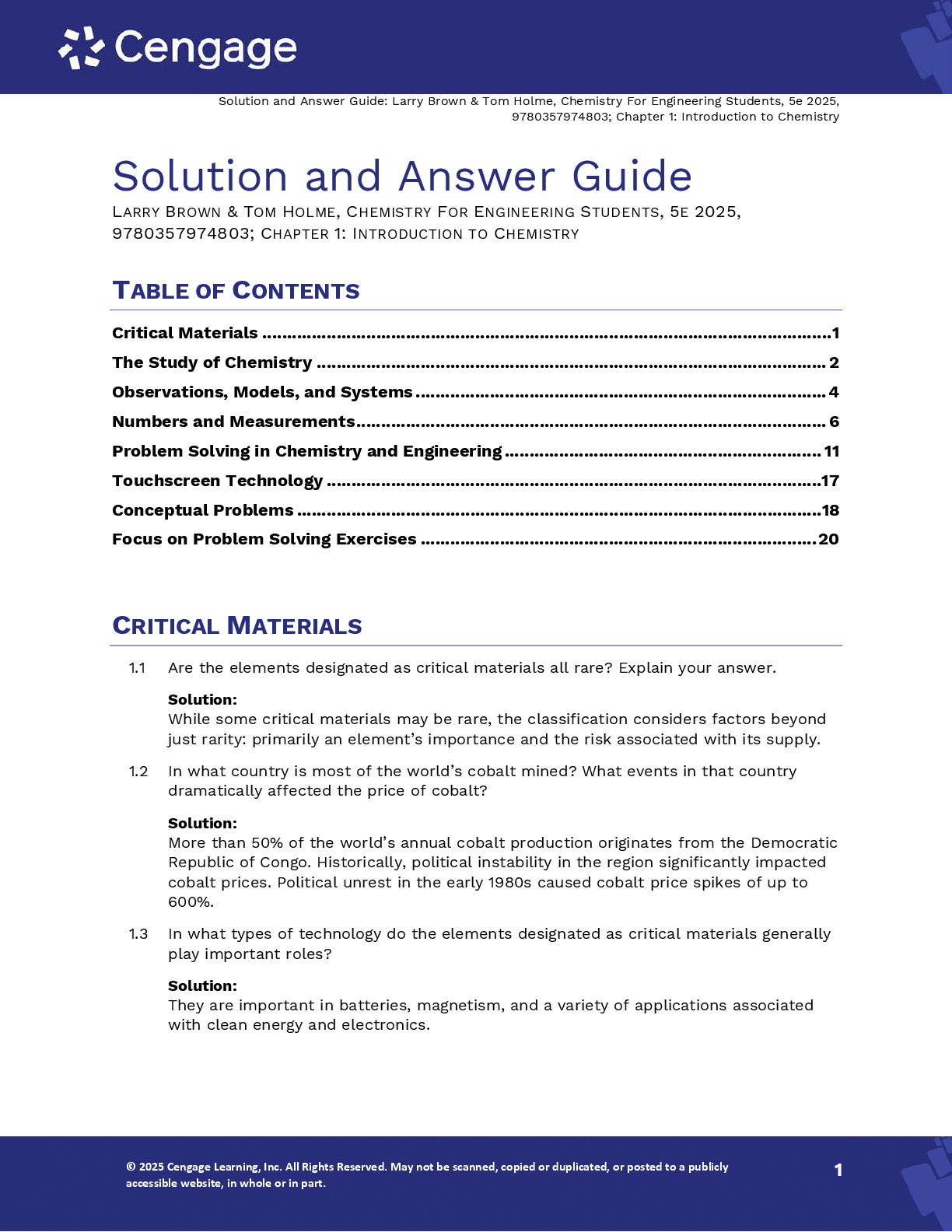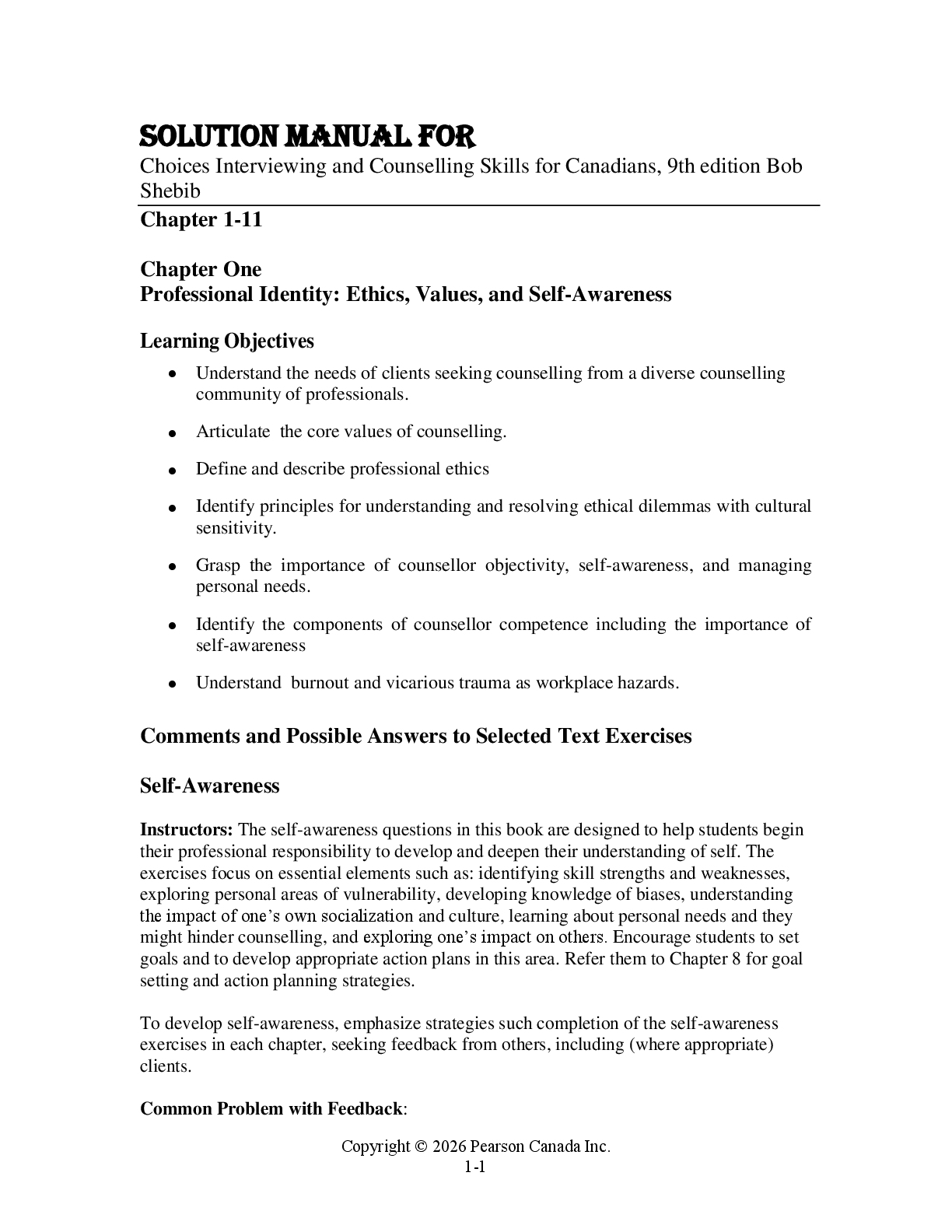Information Technology > SOLUTIONS MANUAL > Systems Analysis and Design, Tenth Edition End of Chapter Solutions.CHAPTER 7 Development Strategies (All)
Systems Analysis and Design, Tenth Edition End of Chapter Solutions.CHAPTER 7 Development Strategies
Document Content and Description Below
Systems Analysis and Design, Tenth Edition End of Chapter Solutions.CHAPTER 7 Development StrategiesChapter Exercises s Questions 1 Describe the concept of software as a service rather than a produc ... t. Is this an important trend? Why or why not? This certainly is an important trend! Students might refer to the Software and Information Industry Association (SIIA) statement that the concept of software as a service is redefining the way that companies develop and deploy their information systems. SIIA also stated that many observers expect traditional packaged applications to be replaced by Web-based services that remove the responsibility for installation, maintenance, and upgrades from a company’s in-house staff. (Page 264) 2 Explain the difference between horizontal and vertical application software. Suggest two examples of each type. A software package that can be used by many different types of organizations is called a horizontal application. An accounting package or a payroll program is a good example of a horizontal application because it can be utilized by many different businesses. In contrast, a software package developed to handle information requirements for a specific type of business is called a vertical application. Example might include software specifically designed for auto dealerships, medical practices, and rental management firms. (Page 271) 3 What are three typical reasons why companies develop their own information systems? The most common reason for a company to choose to develop its own information system is that the company has unique requirements that no software package can satisfy. Other typical reasons for in-house development include the following: a software package could cause major changes to current operations, procedures, or data processing; the new software must work with the company's existing information systems; the software must be compatible with the company's existing hardware and systems software; in-house IT resources provide a competitive edge and an in-house IT staff has a better understanding of the organization’s information needs. (Page 270) 4 What are user applications? Suggest three examples that could boost user productivity. Business requirements sometimes can be fulfilled by a user application, rather than a formal information system or commercial package. A user application utilizes standardSystems Analysis and Design, Tenth Edition Page 2 of 41 business software, such as Microsoft Word, Microsoft Excel, or tablet/cell phone apps, which have been configured enhance user productivity. For example, to help a sales rep respond rapidly to customer price requests, an IT support person can set up a form letter with links to a spreadsheet that calculates incentives and discounts. (Page 274) 5 What are main steps in the software acquisition process? The process of acquiring software involves a series of steps: evaluate the system requirements, consider network and Web-related issues, identify potential software vendors or outsourcing options, evaluate the alternatives, perform cost-benefit analysis, prepare a recommendation, and implement the solution. During software acquisition, a company can use a request for proposal (RFP) or a request for quotation (RFQ). An RFP invites vendors to respond to a list of system requirements and features; an RFQ seeks bids for a specific product or service. (Page 279) 6 What is an RFP, and how does it differ from an RFQ? A request for proposal (RFP) is a written list of the information system requirements that you give to prospective software vendors before you decide on a specific package. RFPs help the vendors determine whether they have a product that is a possible software solution. A request for quotation (RFQ) solicits price and related information from vendors for the particular hardware and/or software products you specify in the proposal. The RFP tends to be open-ended in terms of the possible solutions sought by the organization, while the RFQ usually identifies a specific solution. (Pages 281 - 281) 7 What is the purpose of a benchmark test? Suggest at least two examples of benchmarks. A benchmark test measures the time a software package takes to process a set number of transactions to ensure that the software package will be able to handle the required processing load. Benchmarks might measure input, output, or throughput – or all three. (Page 283) 8 What is an evaluation model? How would you create a weighted evaluation model? When you evaluate several responses to an RFP, you might find it helpful to use an evaluation model. An evaluation model is a technique that uses a common yardstick to measure and compare vendor ratings. To create a weighted model, you assign each element receives a rating based on its relative importance. (Page 280) 9 What decisions might management reach at the end of the systems analysis phase, and what would be the next step in each case? At the end of the systems analysis phase, management might decide to develop an in-house system (the next step is systems design), modify the current information system (the next step is systems design), purchase and/or customize a software package (the next step might be systems implementation, systems design, or planning for testing and documentation of modifications made by the vendor), perform additional work on the systems analysis phase (the next step is to do further systems analysis work), or terminate further work on the information system (the next step is to begin work on another information systems alternative). (Page 309 - 310) 10 Explain the relationship between logical and physical design. You develop the logical design of an information system during the systems analysis phase of the SDLC. The logical design defines the functions and features of the system and theSystems Analysis and Design, Tenth Edition Page 3 of 41 relationships among its components. The logical design includes the output that must be produced by the system, the input needed by the system, and the processes that must be performed by the system without regard to how tasks will be accomplished physically. Logical design defines what must take place, not how it is to be accomplished. In contrast, the physical design of an information system is a plan for the actual implementation of the system. You develop the physical design during the systems design phase of the SDLC. The physical design is built on the system’s logical design and describes a specific implementation, much like a working blueprint describes the actual construction of a building. (Page 287) Discussion Topics 1. As more companies outsource systems development, will there be less need for in-house systems analysts? Why or why not? Answers will vary. Outsourcing might result in less need for in-house developers, but even more need for analysts who can understand business requirements, plan, acquire, and configure outsourced applications. Also, many firms are reluctant to outsource missioncritical IT systems or systems that might involve sensitive data. Because of these considerations, it is unlikely that outsourcing will result in a decline in systems analyst employment. 2. Suppose you tried to explain the concept of throwaway prototyping to a manager, and she responded by asking, “So, is throwaway prototyping a waste of time and money?” How would you reply? Students should understand that not every prototype evolves into a finished system. Actually, most prototypes are used to verify user requirements, after which the prototype is discarded and implementation continues. Although this method is called design prototyping, or throwaway prototyping, point out that the objectives are important and can save time and money during systems development. Students should suggest that regardless of the terminology, the end product of throwaway prototyping is a user-approved design model that documents and benchmarks the features of the finished system. 3. Select a specific type of vertical application software to investigate. Visit local computer stores and use the Internet to determine what software packages are available. Describe the common features of those packages and the features that distinguish one product from another. Vertical application software includes packages designed for specific business operations such as medical offices, colleges, banks, hospitals, insurance companies, construction companies, real estate firms, airlines, and hotel chains. Have students identify two or three examples and develop a checklist that shows the common features and unique features (if any) that each package offers. 4. Select a specific type of horizontal application software to investigate. Visit local computer stores and use the Internet to determine what software packages are available. Describe the common features of those packages and the features that distinguish one product from another. Typical horizontal application software for microcomputers includes payroll packages, contact management systems, personal information management packages, and inventory management software. Generic point-of-sale (POS) software also is considered a horizontal application. If students identify two or three examples, have them develop a checklist that shows the common features and unique features (if any) that each package offers.Systems Analysis and Design, Tenth Edition Page 4 of 41 Projects 1. The text mentions several firms and organizations that offer IT benchmarking. Locate another benchmarking firm on the Internet, and write a description of the services it offers. Students should be able to find many examples of firms that offer benchmark testing. This would be a good assignment to practice some of the Internet search skills that are described in Part D of the Systems Analyst’s Toolkit. 2. Turn to Part C of the Systems Analyst’s Toolkit and review the concept of net present value (NPV). Determine the NPV for the following: An information system will cost $95,000 to implement over a one-year period and will produce no savings during that year. When the system goes online, the company will save $30,000 during the first year of operation. For the next four years, the savings will be $20,000 per year. Assuming a 12 percent discount rate, what is the NPV of the system? An NPV analysis follows: Project Assignment 2: Net Present Value Analysis Information System Benefits and Costs: Year 0 Year 1 Year 2 Year 3 Year 4 Year 5 Total Benefits - Value: (13,970) Notice that the NPV is a negative 13,970. In this example, what looked like an attractive project turned out not to be economically feasible. Why is this so? If no adjustment factor were used, the total benefits would exceed the total costs by $15,000. The primary reason for the negative outcome is the time value of money. Students should recognize that the $95,000 in costs would have to be spent up front, and paid for with today’s dollars. The benefits, on the other hand, would not be realized immediately and were worth less in terms of today’s dollars. This is a good example of the importance of NPV analysis.Systems Analysis and Design, Tenth Edition Page 5 of 41 3. Visit the IT department at your school or at a local company and determine whether the information systems were developed in-house or purchased as software packages. If packages were acquired, determine what customizing was done, if any. Write a brief memo describing the results of your visit. Answers will vary. Encourage students to find out why the decisions were made, if possible, and share the results with the class. 4. To create user applications as described in this chapter, systems analysts often use macros. Microsoft defines a macro as “a series of commands and instructions that you group together as a single command to accomplish a task automatically.” Learn more about macros by using the Help feature in Microsoft Word, and identify three tasks that might be performed by macros. Answers will vary. Many students are not aware of the power and potential of macros. Explain that recording a macro is like using a tape recorder to capture a number of key strokes and mouse clicks, and then replaying the entire series with a single command, whenever desired. Point out that a macro can be used instead of a command that requires digging two or three levels deep into the menu structure. In the Help section, Microsoft includes the following examples of typical uses for macros: To speed up routine editing and formatting To combine multiple commands; for example, inserting a table with a specific size and borders, and with a specific number of rows and columns To make an option [Show More]
Last updated: 2 years ago
Preview 1 out of 41 pages
.png)
Buy this document to get the full access instantly
Instant Download Access after purchase
Buy NowInstant download
We Accept:

Also available in bundle (1)
Click Below to Access Bundle(s)

IT 510 Systems Analysis and Design, Tenth Edition End of Chapter Solutions CHAPTERS 1-12 + PARTS A, B, C & D Questions and Solutions.
IT 510 Advance IT - Systems Analysis and Design, Tenth Edition End of Chapter Solutions Systems Analysis and Design, Tenth Edition End of Chapter Solutions: Chapter 4 Requirements Modelling. Sys...
By QuizMaster 3 years ago
$44.5
14
Reviews( 0 )
$9.00
Can't find what you want? Try our AI powered Search
Document information
Connected school, study & course
About the document
Uploaded On
Aug 22, 2022
Number of pages
41
Written in
All
Additional information
This document has been written for:
Uploaded
Aug 22, 2022
Downloads
0
Views
126



